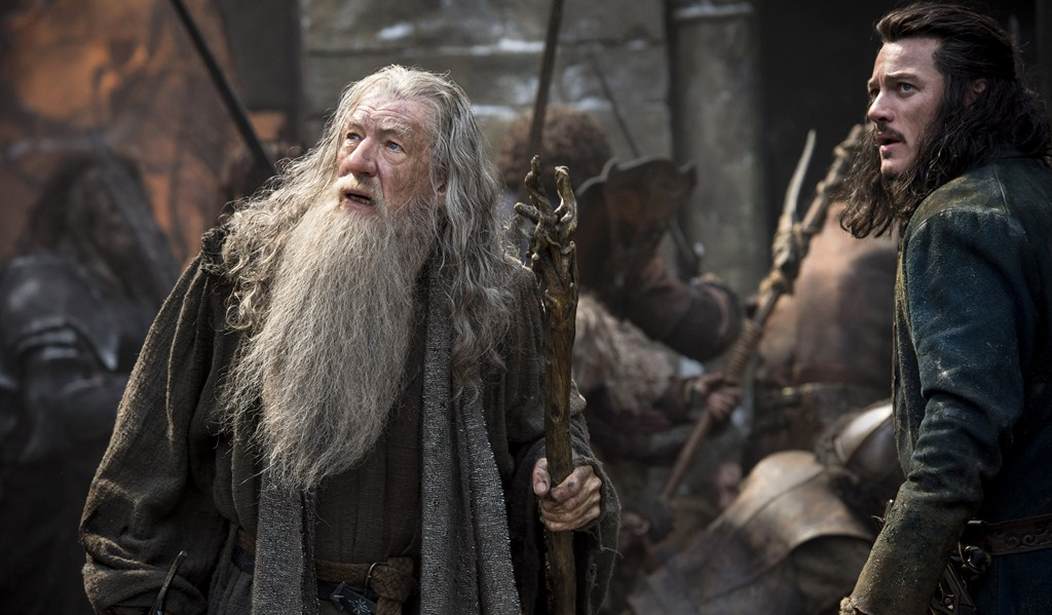Christians know why Jesus had to die. Substitutionary atonement. Propitiation for sin. Payment for the debt we have incurred through willful disobedience.
Read just about any book of the New Testament and you’ll find plenty of Biblical backing for these concepts. For example, 1 Peter 2:24 tells us, “He himself bore our sins in his body on the tree, that we might die to sin and live to righteousness. By his wounds you have been healed.”
But Christ’s death on the cross offered healing to billions over the past 2,000 years -- and it also inaugurated a different kind of storytelling. The hero no longer had to be a Hercules whose strength moved huge stones. He could be one who gave his life for another - and then God would roll away the stone.
Gen. George Patton, famous for believing in reincarnation, claimed he had been a Roman legionnaire. His most famous saying certainly sounded like something a pre-Christian Roman could have uttered: “You don’t win a war by dying for your country. You win a war by making the other poor dumb bastard die for his.” But Christians in the Roman Empire flipped the adage from prosperity gospel to the cross: They won adherents by dying for their faith and their neighbors, imitating through their sacrifice the greatest sacrifice of all.
Ever since then, memorable characters have done the same. The most famous: Sydney Carton in Charles Dickens’ “A Tale of Two Cities”(1859). Since Carton loved Lucie Manette but she loved the imprisoned Charles Darnay, Carton had every cruel reason to relish the guillotining of his rival. Carton, though, out of love for Lucie, saves Darnay’s neck by replacing him in prison and going to his death.
Carton’s oft-quoted next-to-last thought: “It is a far, far better thing that I do, than I have ever done.” But my takeaway: Once Jesus provided the real-life example of sacrificing all to save enemies, and millions of people saw that as ultimate virtue, Dickens could write a far, far better ending than was commercially viable when a story was supposed to end with killing enemies.
Recommended
Forty years after “A Tale of Two Cities”came “The War of the Worlds.” Author H.G. Wells, the youngest child of a Protestant mother, had studied with Thomas Huxley, known as “Darwin’s Bulldog.” Their dueling teaching led to Wells giving a mixed message. By survival-of-the-fittest logic the Martian invaders should have been the heroes: They were more evolved and showed their fitness by creating better weapons than Earthlings had. But Wells wrote of human heroes in a small boat sacrificing their lives to destroy Martian ships and allow refugees to escape.
Forty years after “The War of the Worlds,” J.R.R. Tolkien began writing “The Lord of the Rings.” The scene my children found most dramatic was of Gandalf saving his band from the Balrog, at the cost of falling into an almost-bottomless pit and fighting the infernal beast up an almost Endless Stair. Gandalf dies and is then resurrected, going from Gandalf the Grey to Gandalf the White.
Different characters, different eras, but all motivated by heroic compassion of the kind that ancient literature did not have. Nearly a century ago James Frazer, in “The Golden Bough,” audaciously suggested that early Christians plagiarized the story of Christ’s death and resurrection from pre-Christian religions. Thirty years ago, though, University of Chicago professor Jonathan Z. Smith showed Frazer’s case for an abundance of “dying and rising deities” to be based on “imaginative reconstructions.”
Some mythic gods, Smith observed, returned from a far place but had not died. Others died but were not resurrected. Smith wrote, “There is no unambiguous instance in the history of religions of a dying and rising deity.” None, that is, until Jesus Christ. He really did it: not just story, but true history. Gaining victory by compassionate suffering-with-others was a new idea in Rome. Gaining individual resurrection to the next life, as opposed to a collective national revival, was a new idea in Jerusalem.
At Easter I’m primarily thankful that up from the grave Christ truly arose, and because of God’s grace we can too. But as a writer I’m also glad for the great stories that the greatest history inspired.

























Join the conversation as a VIP Member